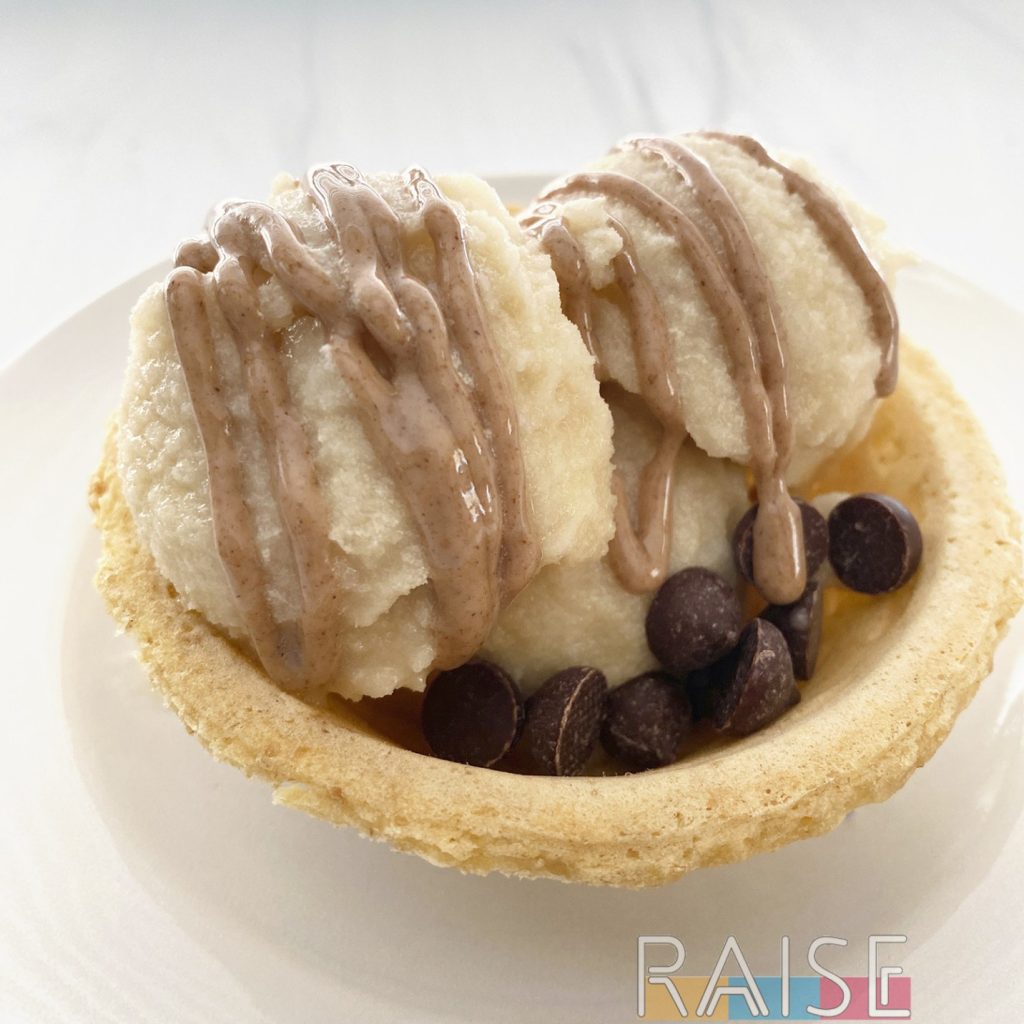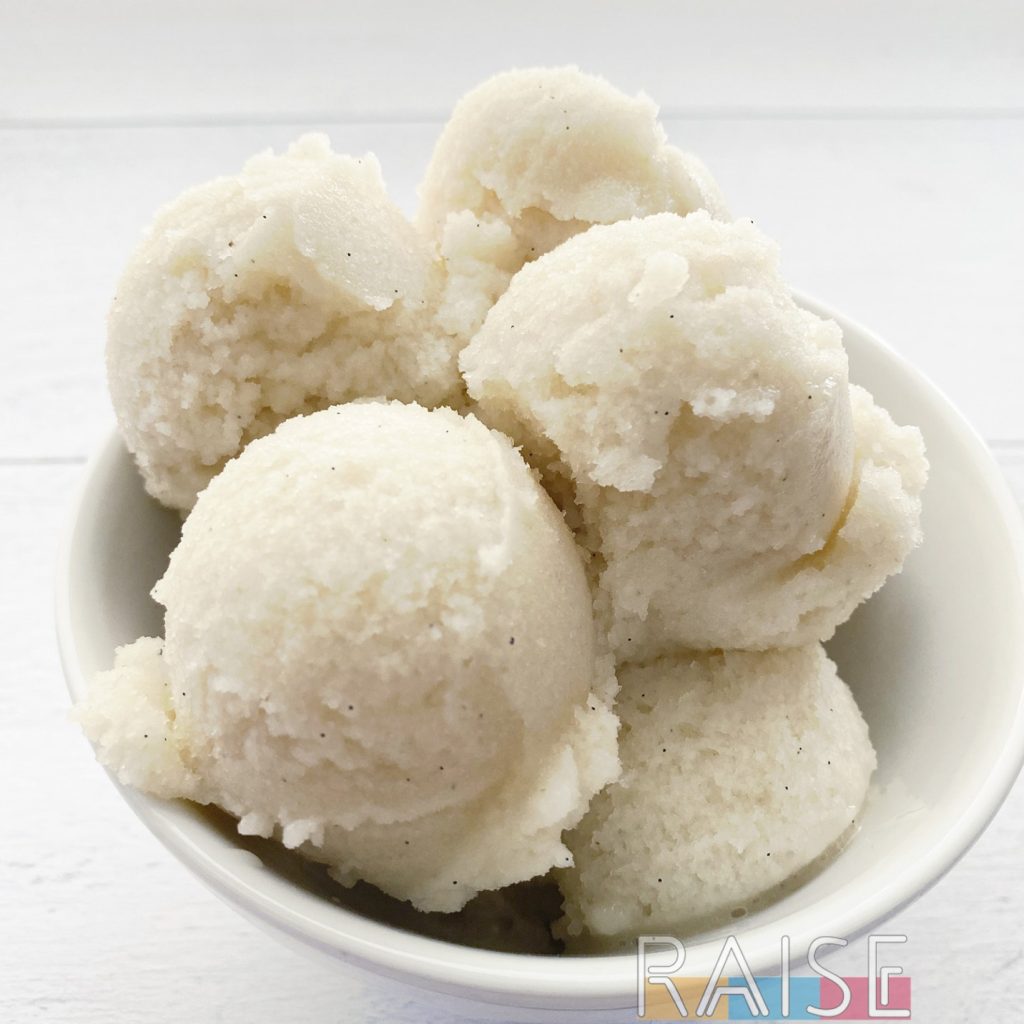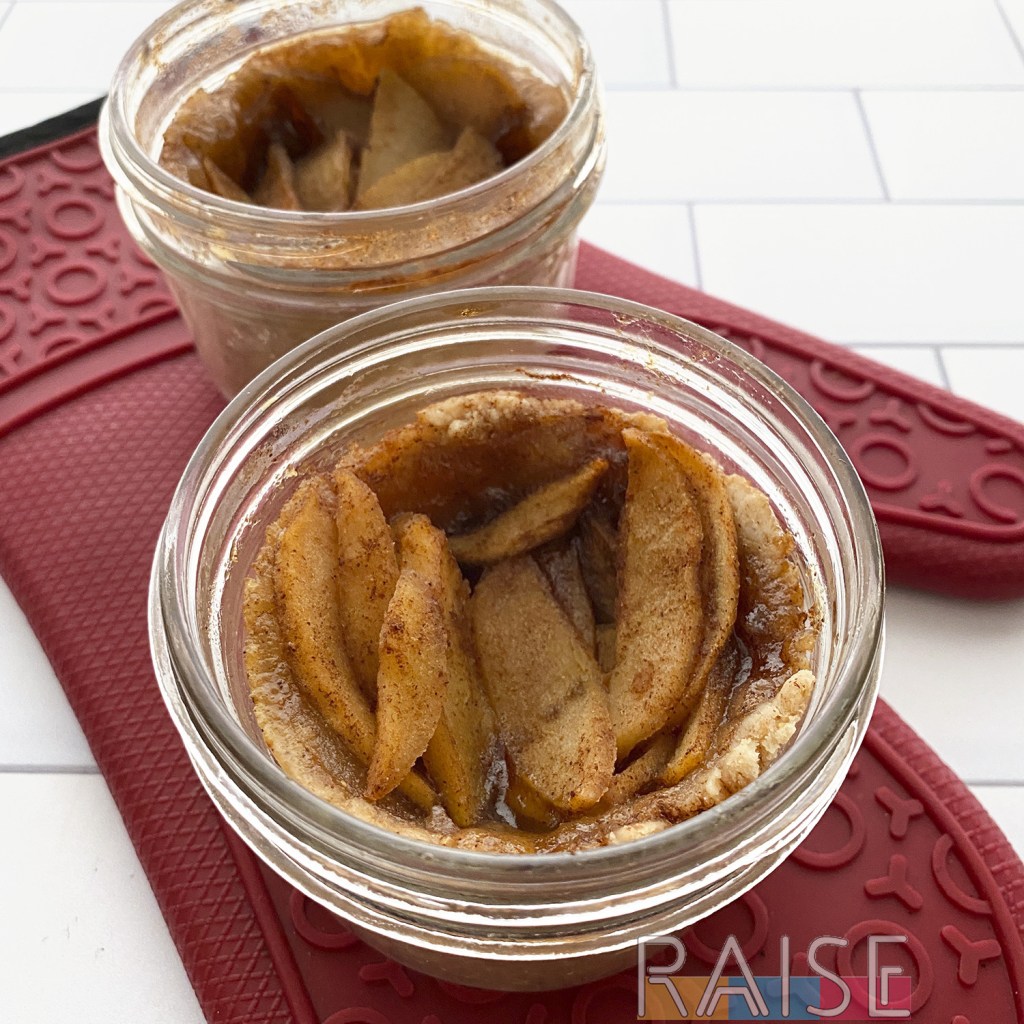What is GERD
You may be aware of heartburn, but GERD (gastroesophageal reflux disease) is more than regular heartburn. It’s when a person experiences ongoing heartburn (some describe this as a burning sensation in their chest) several times a week, has a tendency to become more severe over time, and can occur at night (waking the person up).
GERD can also be called chronic acid reflux, but first we need to know, what is “reflux”? Reflux is defined as the flow of fluid through a vessel or valve in the body, in a direction opposite to normal. So when we put the two together acid + reflux, we get “the flow of acid in the wrong direction”. In the case of GERD and acid reflux, it’s moving back up towards the mouth rather than down towards the intestines.
How Fatty Foods Trigger GERD Symptoms
I personally think that when you have a better understanding of how the mechanisms in the body work, it makes it easier to not only understand our medical conditions, but also be invested in improving our overall health. So, let’s take a look at fatty foods, which includes ice cream and many other frozen desserts.
When you eat fatty foods and they enter the stomach pouch, this triggers the release of a hormone called cholecystokinin (also called CCK). This in turn can cause the lower esophageal sphincter (also called LES) to relax. The chronic relaxing or malfunctioning of the lower esophageal sphincter is what allows for the reflux to happen, which then causes your symptoms.
Another way to think about this: your LES is like the door to your house. If it’s locked up tight, nothing gets in. When it’s left wide open, wind, debris, and who knows what else can enter. However, just like a door to your home, it can be left ajar (open a tiny bit), or wide open. How open the door is indicates how much stuff can enter your home. The same is true of your LES. In some patients, there’s only slight disfunction whilst others are experiencing chronic, full on disfunction.
Common GERD Symptoms
Symptoms of GERD can include:
- Upper Abdominal Pain
- Chest Pain
- Burning Sensation in Your Chest
- Difficulty Swallowing
- Lump in the Throat
- Sour Liquid Backwash
- Nausea
Whilst these are the most common acid reflux symptoms, remember, no two people are the same. You may experience some, none, or all of them. Additionally, you may have heartburn symptoms and acid reflux symptoms that aren’t on this list. A great way to track not only your symptoms of acid reflux, but any progress made from dietary changes and lifestyle changes, is to keep a detailed food journal. This will also help you have a better understanding of your unique trigger foods, and also if you have a threshold on the amount of food eaten to cause a flare in symptoms.
Related: 35 GERD Diet Recipes & Meal Ideas
First: What is Ice Cream (trust me, this is important)
I know this may seem like an odd question, but it’s important that understand what the legal definition of ice cream is so you know how to properly shop for ice cream and ice cream-like products. Here in the United States, the FDA has a well defined outline of what “ice cream” is, and a hallmark of that is the amount of milk solids and milk content that must be present, legally. Additionally, the FDA definition does not legally include eggs.
What this means: if you see the term “Ice Cream” on a label, it means that milk is indeed present. If you see something like “Frozen Dessert” it means that a dairy free milk may have been used.
The term “Dairy-Free Ice Cream” means that any type of milk was used, with the exception of cow’s milk. These days you can get dairy-free ice cream made from a wide range of milks including almond, coconut, and cashew. From there, we have different types of names for frozen desserts containing milk such as frozen yogurt or frozen custard. Just know that when you see the term “ice cream”, it’s not GERD friendly.
Second: Traditional Ice Cream Ingredients to Avoid
Now that we know what ice cream is, let’s look at the traditional ingredients that need to be avoided when following a GERD diet.
- Buttermilk
- Cream
- Egg Yolk
- Milk (whole milk, 2% milk, etc.)
- Milk Fat
- Yogurt
These are the most common acid reflux triggers you’ll find in traditional ice cream and it’s why (traditional) ice cream is deemed bad for GERD.
Third: Different Types of Ice Cream and Frozen Desserts
Now that we have all of the technical information out of the way, let’s look at what types of ice cream you can and can’t have when managing acid indigestion and GERD.
First, if you haven’t heard of Vegan Nice Cream (sometimes written as NiceCream), it’s my absolute pleasure to tell you all about it. Vegan nice cream is rich, smooth, ultra creamy vegan dairy free ice cream that’s made with bananas and/or cashews.
When frozen and blended with other ingredients, bananas really lend themselves to creating an amazing ice cream-like texture. Cashews on the other hand are naturally super creamy, however, given the high-fat content in large amounts, you’re going to want to want to stick to nice cream that’s made primarily with bananas.
Traditional Types of Ice Cream You Can Eat With GERD
- Traditional Sorbet: Made from fruit puree and sugar (should contain no other ingredients).
- Traditional Italian Ice: Made from puree and sugar, icier than sorbet, and contains less sugar than sorbet.
- Traditional Dairy Free Vegan Ice Cream: Made without milk or egg, but can have a high-fat content, so read labels carefully.
For both sorbet and Italian ice, you’ll need to avoid flavors that contain acidic fruits including lemons, oranges, grapefruit, and pineapple.
Traditional Types of Ice Cream to Avoid with GERD
- Custard Ice Cream AKA Frozen Custard: Made milk and eggs.
- Traditional Dippin’ Dots: Made from frozen droplets of liquid ice cream
- Traditional Dondurma: A thick Turkish ice cream.
- Traditional Frozen Yogurt & Soft Serve
- Traditional Gelato: Made with whole milk, but no eggs.
- Ice Milk: A type of low fat ice cream.
- Traditional Kulfi: A type of Indian Ice Cream
- Traditional Mochi: A Japanese style frozen treat containing rice, milk, and eggs.
- New England Ice Cream: A type of chewy ice cream native to New England, contains milk.
- Philadelphia Ice Cream: Made with milk, but no eggs.
- Rolled Ice Cream: A trendy novel ice cream that’s rolled up cream, milk, and sugar.
- Semifreddo: A thick type of ice cream that can be sliced, made from a combination of ice cream, mousse, and custard.
- Traditional Sherbet: Made with fruit puree (sometimes fruit juice), and contains a small amount of dairy.
- Snow Cream: Shaved milk-based ice cream.
- Spumoni: Not as thick as a custard based ice cream, but also contains nuts or candied fruit.
Traditional is Key
Did you notice how the list of ice creams to avoid has the word traditional in front of most of them? That’s an important takeaway because we’re living in modern times where creators are finding solutions for those who need to avoid high fat foods, desserts with a high sugar content, milk and dairy products, and everything in between.
What this means for you is that you will be able to find frozen desserts that mimics ice cream, that are indeed GERD friendly. That means ice cream consumption is still an option 🙂
Related: 35 Easy GERD Lunch Ideas & Recipes
Non-Traditional Ice Cream You Can Have on a GERD Diet
Now, here comes the best part of today’s article. It’s time to see that classic summer foods and treats are absolutely on the menu, so long as you source the well. Here’s a list of what you can be on the lookout for. I will tell you, if you’re ever in the Pacific North West, San Francisco, or Los Angeles areas, they are teeming with these types of products. It’s actually lowkey amazing how many shops are fully dedicated to dairy free and egg free offerings.
- Top 9 Allergen Free Ice Cream
- Top 14 Allergen Free Ice Cream
- Vegan Dippin’ Dots
- Vegan Gelato
- Vegan Ice Milk
- Vegan Mochi
- Vegan Sherbet
- Vegan Semifreddo
- Vegan Soft Serve (some juice shops serve this)
Did you notice that most of these options say vegan? That’s because vegan foods are a great choice where ice cream is concerned because they’re naturally dairy free, milk free, and egg free. Some oven argue that vegan frozen desserts are healthier alternatives, however, don’t take that claim at face value as some vegan desserts include ingredients you can’t even pronounce.
If you only purchase “dairy free XYZ” there’s a chance it can still contain eggs. That doesn’t mean you shouldn’t look at the package, it means you’ll need to read the ingredient label carefully to see if egg yolks are present.
Now, the term vegan doesn’t mean “low fat food items”, so you’re still going to have to read the labels carefully, or seriously limit your portions as to not trigger heartburn and other GERD symptoms.
Note: In some cases, the term vegan and plant based (also written plant-based) are interchangeable, and you may see one or the other on food labels.
Get Creative: Make Gerd Friendly Ice Cream at Home
Finally, I want to inspire you to make your own dairy free ice cream at home. It’s very doable and you can start with GERD friendly ingredients to eliminate the risk of acid reflux. In fact, I’ve created quite a few dairy free, egg free, GERD friendly recipes that you can check out below.
One of the BIGGEST tips I can give you if you plan to make ice cream at home is to invest in a great counter top ice cream machine with a compressor built in. Ice Cream Science put together an extraordinary writeup on the top three machines to choose from. I personally was considering two of them when I came across the article, and most ice cream pros have one of the three machines at home (at work they use commercial sized machines). So, do yourself a favor and read up on the science behind the machines and how to make good ice cream so you can get great results at home.
Additionally, before you dive into ice cream making, be sure to talk with your doctor or primary healthcare provider about the types of ingredients you’d like to use to make sure you won’t have any digestive issues (based on your unique needs and case history).
- Homemade Dairy Free, Egg Free Oat Milk Ice Cream
- Nectarine & Peach Ice Cream
- Corn Free Vanilla Ice Cream
- Watermelon Ice Cream
- Vegan Strawberry NiceCream
- Horchata Ice Cream
- Strawberry Freeze
 |
 |
 |
 |
 |
 |
 |
Delicious GERD Friendly Desserts to Pair with Your Ice Cream
- Crispy Oat Apple Pie
- Pear Dessert
- Grain Free + Egg Free Donuts
- Pumpkin Pie Pancakes
- Individual Grain Free Apple Pie Cups (serve your ice cream in one of these for a *chef’s kiss* experience)
- Carrot Cake Waffles
 |
 |
 |
 |
 |
 |
Ice Cream Alternative: Super Thick Smoothies
If you’ve ever had a mega thick smoothie (too thick for a straw and must be eaten with a spoon), you’ll know that smoothies can be a great alternative to ice cream. It will be very similar to vegan nice cream, but usually have a lower sugar content.
You can get creative with flavours as well. When my kids were younger, I made them thick smoothies and served them on ice cream cones ALL the time. My kids thought they were living in dessert land, but really, it was just a smoothie. Some of their favourite flavours/smoothies include:
- Tart Cherry Smoothies with Maple Syrup
- Banana + Strawberry Smoothies
- Vanilla Zucchini Banana Smoothies
- Blueberry + Banana Smoothies
- Peanut Butter + Dates + Banana Smoothies
When I make these, I don’t use cow’s milk, additional fat, or eggs (it is a smoothie). Yet, you can create incredible textures and feel like you’ve had cold dairy products/desserts.
More About GERD: Foods to Avoid on a GERD Diet
As you read over this list, you’ll notice that the common thread for most of the items are acidic foods and fatty foods. In a nut free nutshell, those are the most common triggers for those managing acid reflux disease and GERD.
- Alcoholic Beverages
- Bacon & Hot Dogs
- Butter (in high amounts)
- Caffeine (coffee, most teas, etc. but decaffeinated herbal teas are OK)
- Carbonated Beverages (soda, soft drinks, energy drinks, etc.)
- Cayenne
- Chili Powder
- Chocolate
- Citrus (including lemon and lime juices, orange juice, etc.)
- Cream Cheese
- Cream Based Soups (made with dairy cream, not a creamy soup made with a thickening agent)
- Condiments (avoid condiments such as mustard, ketchup, and BBQ sauce that contain vinegar or tomatoes)
- Cured Meats with a High Fat Content (including salami, sausage, etc.)
- Dairy & Egg Based Puddings (think: pudding made with fatty ingredients such egg yolk)
- Egg Based Mayonnaise (small amounts of egg free may may be tolerated, but it’s not completely fat free)
- Fatty Red Meat
- Fried Foods (french fries, potato chips, onion rings, etc.)
- Full Fat Dairy Products (cream, sour cream, etc.)
- Garlic
- Greasy Foods
- High-Fat Foods in General (butter, cheese, ice cream, high-fat dairy products, etc.)
- Ice Cream
- Onions (green onion, white onion, yellow onion, red onion, purple onion, scallions, shallots)
- Peppercorn (black pepper, white pepper, green pepper, pink peppercorns)
- Peppermint
- Pineapple
- Salad Dressings (most will contain ingredients you can’t have, but you can make delicious salad dressing at home)
- Spearmint
- Spicy Foods (including spices such as cayenne pepper and condiments such as hot sauce)
- Tomatoes (including tomato sauce, ketchup, BBQ sauce, etc.)
- Vinegar
- Whole Milk
It’s important to note that these foods are mostly healthy foods for those who aren’t managing GERD. The issue for those battling acid reflux is that on an empty stomach, these foods can cause acid reflux and lead to you experiencing symptoms.
For those who enjoy milk, especially because it’s known to alleviate heartburn in the short term, fat-free milk in small amounts are the way to go. Know that milk, in the long run, can increase stomach acid production which is what we’re trying to avoid.
It’s important that you also avoid eating two to four hours before bedtime, as laying down (or a drastic change in posture) can cause acid in the stomach to leak into the esophagus and trigger your reflux and symptoms.
List of Foods to Eat on a GERD Diet
Unlike many other restricted diets that will leave you scratching your head at the grocery store, I can tell you, the GERD diet (and the acid reflux diet) offer you a VERY wide range of ingredients to work with. Whilst this isn’t an exhaustive list, it will get you started. Don’t forget, it’s always a good idea to work with your medical team when making major diet and lifestyle changes to to ensure you’ll have the best results.
Fresh Vegetables
Here’s a list of common and popular fresh veggies you can incorporate into your diet. Also note, frozen vegetables also have great health benefits and vitamins + nutrients, and can be included in your diet as well.
- Asparagus
- Bok Choy
- Corn
- Cruciferous Veggies (broccoli, cauliflower)
- Edamame (soy)
- Leafy Greens (chard, collard greens, kale)
- Lettuce & Salad Greens (arugula, spinach)
- Mushrooms (there are loads of varieties to choose from)
- Peas & Green Beans
- Root Vegetables (beets, carrots, potatoes)
- Squash (spaghetti squash, zucchini/courgette)
- Sweet Potatoes, Japanese Yams, and Yams
Fresh Fruits
Non-citrus fruits and low-acid fruits are going to be the focal point of what you want to eat on a GERD diet. Remember, frozen fruit will also deliver great health benefits, vitamins, and nutrients, so use those as well. Here are lots of delicious options:
- Apple
- Apricot
- Banana
- Blackberry
- Blueberry
- Cantaloupe
- Dates
- Figs
- Grapes
- Honeydew Melon
- Mango
- Nectarine
- Peach
- Pear
- Strawberry
- Watermelon
Whole Grains
There are SOOOOO many whole grains to choose from that will be compatible with a GERD diet. I’ll list a few, but this no where near an exhaustive list.
- Brown Rice, White Rice, Wild Rice
- Gluten Free Grains (Buckwheat, Cassava, Millet, Sorghum, etc.)
- Oats (Rolled Oats, Steel Cut Oats, Oatmeal, etc.)
- Wheat (Whole Wheat, Wheat Flour, Wheat Pasta, etc.)
Lean Meat & Lean Protein
Lean proteins come in a wide range of options. Here are many to use in your recipes. I personally like to rotate thru proteins as they each have a different nutrition profile, and will bring different flavors to your plate (or bowl).
Beans & Lentils: legumes are on the menu, and their fiber content can improve digestion over time, however, don’t start with a cup of beans if you’re not used to eating them as this can cause GI distress.
Eggs (some need to avoid egg yolks due to the fat content and only eat egg whites)
Lean Mammal Meats: beef, bison, chicken breast, rabbit, and turkey (for some, you’ll need to specifically purchase a lean cut or lean grind).
Seafood: fish such as tilapia, salmon, trout, and sea bass. Shellfish such as scallops, shrimp, and oysters. Generally, all seafood is on the menu.
Healthy Fats in Moderation
Whilst you’re going to need to avoid greasy foods and deep fried foods, there are still many healthy fats to choose from on a GERD diet. Make sure you’re making wise choices and look into monounsaturated fats and polyunsaturated fats as these will bring the good fats to the table.
- Cooking Oils: Avocado oil, coconut oil, olive oil, sesame oil, tiger nut oil (tuber, not a tree nut)
- Avocado and Homemade Guacamole (store bought will contain non-GERD ingredients)
- Tree Nuts (almonds, pecans, cashews, pistachios, walnuts, etc.)
- Seeds (chia seeds, flaxseed, pumpkin seeds)
- Fatty Fish such as Salmon
Broth, Stock, and Bone Broth
Beef stock, chicken broth, and bone broth are all excellent items to make at home. You may be able to purchase clean/minimal/organic options, but due to how common onion is as an ingredient, you may need to make these at home.
When you make these at home, you can cook with them to make flavourful soups, stews, and more. You can also use them to cook rice and pasta in to add more flavour to your meals.
Salt, Seasonings, and Herbs
You’ll most likely be making a lot of foods at home. Knowing that, make sure you have delicious sea salt, pink salt, and smoked salts available. Additionally, have a range of single ingredient spices such as thyme, rosemary, basil, oregano, and marjoram.
You’ll want to avoid spice blends that contain onion, garlic, hot peppers, and any other non-GERD-friendly ingredinets.
You May Find Chewing Gum Helpful
In the case of chewing gum, it may help you feel a bit better, as it increases saliva production and reduces the amount of acid in the esophagus. However, it’s important that you avoid peppermint gum and spearmint gum as these can relax the lower esophageal sphincter.
Answering Your Gerd Ice Cream Questions
Is angel food cake good for someone with GERD?
Yes, angel food cake would be a great option to serve with your ice cream. Traditional angel food cake is made with lots of egg whites, and has a low fat content. You should be able to enjoy this without having any negative effects on the lining of the esophagus.
If you’re new to following a GERD diet however, I also encourage you to keep a detailed food journal as you try new foods such as homemade ice cream and angel food cake, as you need to make sure that you’ve eliminated all of the trigger foods responsible for your chronic heartburn and GERD symptoms. A good journal will track all of your food, symptoms, and more, so you’ll know if something new is causing an issue.
Is it possible to make GERD-friendly ice cream floats at home?
No, it won’t be possible. Whilst you can make a GERD-friendly ice cream, you won’t be able to have the soda element. All sodas and carbonated beverages are off the menu when it comes to GERD, as these are a common trigger food for most individuals managing GERD. That also includes homemade fizzy drinks using a water carbonator. The core issue is the carbonation.
Now, if you were to make a flat soda at home combined with homemade ice cream, that’s a possibility. Just make sure you manage your expectations because flat soda won’t give you the same mouthfeel as a traditional ice cream float.
Can I eat ginger on a GERD diet?
Yes, you can! Both fresh ginger and ground ginger have the green light. In fact, you could make a really delicious maple ginger ice cream at home with GERD friendly ingredients.
Is there a way to have acidity without having lemons, oranges, and pineapples in my ice cream?
The only product I can suggest that you look into is called citric acid. It sounds like it comes from citrus fruits, but 99% of citric acid sold commercially is corn derived. Ask your medical team if this will have any negative impact on your digestive system before purchasing it.







